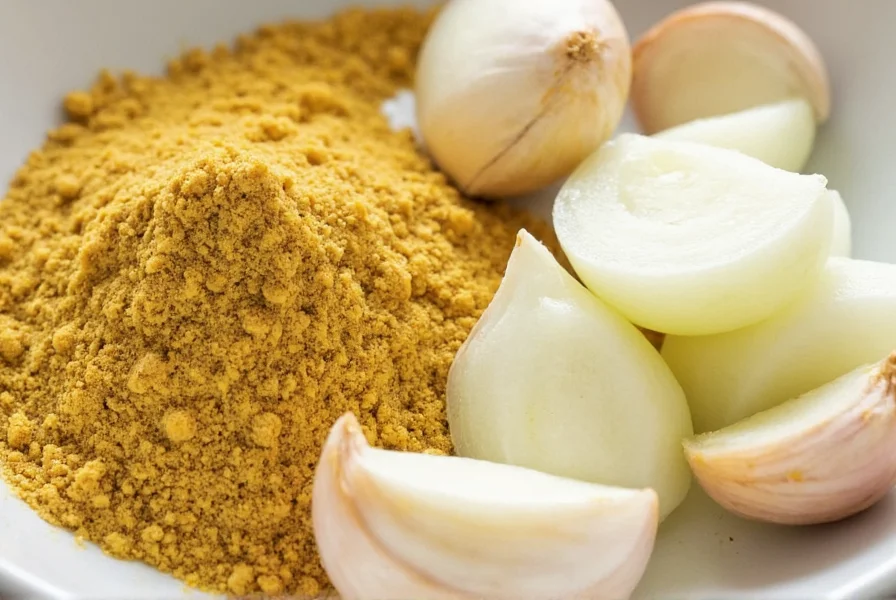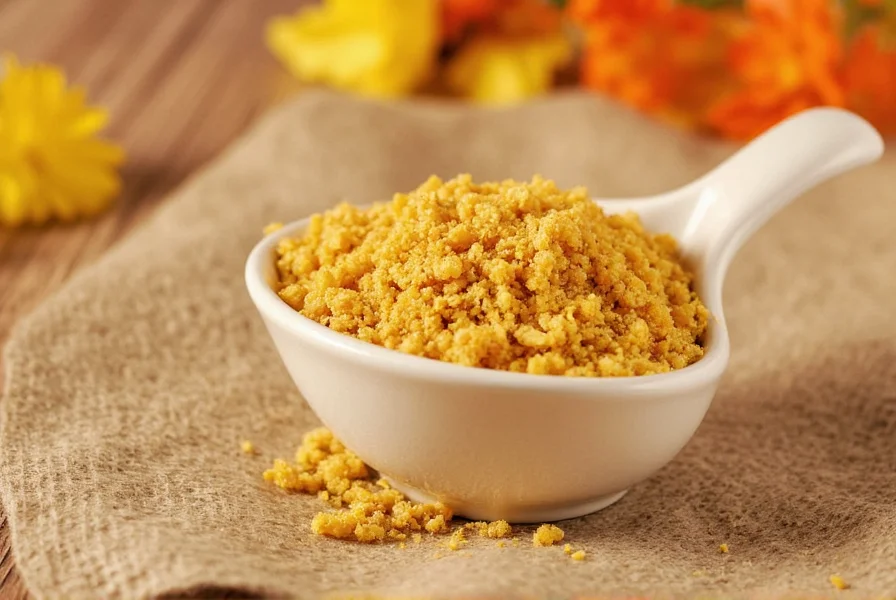The best asafoetida substitutes are garlic (1 clove per 1/4 tsp asafoetida), onion (1 tbsp per 1/4 tsp), or a combination of both. Fenugreek seeds (1/8 tsp per 1/4 tsp) offer a milder alternative for Indian dishes when asafoetida isn't available.
Asafoetida, also known as hing, is a pungent resin used extensively in Indian cuisine, particularly in lentil dishes and vegetable preparations. Many home cooks find themselves without this specialty ingredient and need practical alternatives that won't compromise their recipes. Understanding effective asafoetida substitutes requires knowledge of its unique flavor profile and culinary function.
Understanding Asafoetida's Role in Cooking
Before exploring substitutes, it's essential to understand why asafoetida is used. This ancient spice provides:
- A savory umami depth similar to garlic and onion
- Digestive properties that reduce gas from legumes
- A distinctive aroma that enhances vegetarian dishes
- Flavor complexity in small quantities (typically 1/4 tsp per recipe)
The strong sulfurous smell of raw asafoetida transforms when heated in oil, becoming pleasantly savory. Effective substitutes must mimic this transformation and provide similar flavor enhancement without overpowering the dish.
Top Asafoetida Substitutes Ranked by Effectiveness
Not all substitutes work equally well in every recipe. Here's how the most common alternatives compare:
| Substitute | Ratio (vs 1/4 tsp asafoetida) | Best For | Limitations |
|---|---|---|---|
| Garlic (fresh) | 1 small clove | Dals, curries, vegetable dishes | Stronger raw flavor, may overpower delicate dishes |
| Onion (fresh) | 1 tablespoon finely chopped | Most Indian vegetarian dishes | Changes texture, less umami depth |
| Fenugreek seeds | 1/8 teaspoon | Sambar, rasam, lentil dishes | Bitter if overused, different flavor profile |
| Fennel seeds | 1/4 teaspoon | Milder dishes, Jain cuisine | Sweeter profile, less savory depth |
| Garlic-onion blend | 1/2 clove garlic + 1 tsp onion | Most versatile substitute | Requires two ingredients |

How to Use Garlic as Primary Asafoetida Alternative
Garlic provides the closest flavor match to asafoetida because both contain sulfur compounds that create similar aromatic transformations when cooked. For best results:
- Use 1 small garlic clove per 1/4 teaspoon of asafoetida called for
- Finely mince or crush the garlic before adding to hot oil
- Add at the same point in the recipe where you'd add asafoetida (typically at tempering stage)
- Reduce other garlic in the recipe by 1 clove to avoid overpowering
This asafoetida replacement works particularly well in dals, vegetable stir-fries, and potato dishes. The key is adding it to hot oil first to allow the raw flavor to mellow, just as with authentic asafoetida.
Onion as a Milder Asafoetida Substitute
Onion offers a more subtle alternative that works well in dishes where garlic might be too strong. When using onion as an asafoetida replacement:
- Substitute 1 tablespoon finely chopped onion per 1/4 teaspoon asafoetida
- Add to hot oil at the beginning of cooking
- Cook until translucent before adding other ingredients
- Best for dishes like kadhi, certain vegetable preparations, and rice dishes
While onion lacks the intense umami of asafoetida, it provides similar savory depth without the strong initial aroma that puts some cooks off. This makes it an excellent choice for those sensitive to strong smells or cooking for guests who dislike pungent spices.
Fenugreek Seeds: The Traditional Alternative
Fenugreek seeds (methi dana) have been used historically as an asafoetida substitute in Indian cooking. To use them effectively:
- Use 1/8 teaspoon fenugreek seeds per 1/4 teaspoon asafoetida
- Dry roast briefly before adding to oil (30 seconds)
- Add at the tempering stage along with other spices
- Works especially well in sambar and rasam
Fenugreek provides a similar digestive benefit to asafoetida and creates a comparable savory base. However, it has a slightly bitter note that requires careful measurement—too much will ruin your dish. This asafoetida alternative works best in robustly spiced dishes where the bitterness can be balanced.
Creating Your Own Asafoetida Substitute Blend
For the most versatile asafoetida replacement, create a custom blend that mimics multiple aspects of hing's flavor profile:
Homemade Asafoetida Substitute Recipe:
Mix together:
- 2 parts garlic powder
- 1 part onion powder
- 1/2 part ground fenugreek
- 1/4 part turmeric (for color)
Use 1/4 teaspoon of this blend to replace 1/4 teaspoon of asafoetida. This combination captures the savory depth, umami quality, and digestive properties of authentic asafoetida while being shelf-stable and convenient.

Common Mistakes to Avoid with Asafoetida Substitutes
Many cooks make these errors when replacing asafoetida:
- Using too much substitute - Asafoetida is potent; substitutes should be used sparingly
- Adding at the wrong time - Like asafoetida, substitutes work best when added to hot oil first
- Not adjusting other ingredients - Reduce additional garlic or onion in the recipe
- Expecting identical results - Each substitute changes the flavor profile slightly
- Using raw substitutes in finishing dishes - Always cook substitutes in oil first
When Substitutes Won't Work
While these alternatives work well in most cases, certain dishes truly require authentic asafoetida:
- Traditional Jain cuisine (where garlic and onion are prohibited)
- Certain regional specialties like Gujarati kadhi
- Medicinal preparations that rely on asafoetida's specific properties
In these cases, it's worth seeking out authentic asafoetida, which is available in most Indian grocery stores or online. A small container lasts for years when stored properly in a cool, dark place.
FAQ: Asafoetida Substitutes
Can I use garlic powder instead of fresh garlic as an asafoetida substitute?
Yes, use 1/8 teaspoon garlic powder per 1/4 teaspoon of asafoetida. Garlic powder works well as an asafoetida replacement in dry spice blends or when fresh garlic isn't available. It provides consistent flavor without the moisture of fresh garlic, but lacks some complexity.
What's the best asafoetida substitute for someone with garlic allergy?
For garlic allergies, use a combination of onion (1 tablespoon per 1/4 tsp asafoetida) and a pinch of asafoetida-free curry powder. Fenugreek seeds (1/8 tsp) also work well as a standalone asafoetida alternative for those with garlic sensitivity.
How does asafoetida substitute affect digestion compared to real asafoetida?
Garlic and onion substitutes provide similar digestive benefits to asafoetida by reducing gas from legumes, though not as effectively. Fenugreek seeds offer comparable digestive properties. The key difference is that real asafoetida works at much smaller quantities, making it more potent for digestive issues.
Can I use asafoetida substitute in vegan cheese recipes?
Yes, for vegan cheese recipes that call for asafoetida, use 1/4 teaspoon onion powder per 1/4 teaspoon asafoetida. This provides the savory depth without overpowering the delicate cheese flavor. Avoid garlic in these applications as it can create an off-flavor in dairy alternatives.
Does asafoetida substitute work in fermented foods like dosa batter?
For fermented batters, use 1/8 teaspoon fenugreek seeds (dry roasted and ground) per cup of batter as an asafoetida replacement. This provides similar digestive benefits without interfering with the fermentation process. Avoid fresh garlic or onion in fermented applications as they can alter the fermentation.











 浙公网安备
33010002000092号
浙公网安备
33010002000092号 浙B2-20120091-4
浙B2-20120091-4